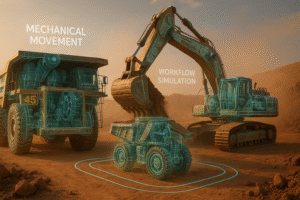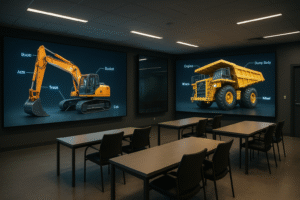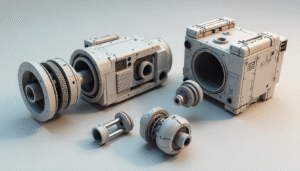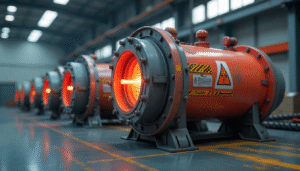Boosting e-commerce sales has never been easier with the integration of 3D product animation. Utilizing 3D product animation services allows brands to showcase their product’s unique features in a visually stunning manner. With the help of 3D modeling and 3D rendering techniques, businesses can create captivating 3D product videos that enhance the customer experience. Research shows that when customers see 3D product videos, they’re more likely to make a purchase, significantly increasing conversion rates.
These product videos can be a crucial part of any marketing campaign, especially during a product launch. By using advanced animation software, brands can animate their product features in a photorealistic way, offering a level of detail that traditional product photography and 2D animation cannot achieve. For companies that already have a 3D model, the transition to 3D product animation is seamless, providing a quick turnaround for product presentations.
Partnering with a reputable 3D product animation company ensures the production of engaging 3D visuals that resonate with customers. By leveraging 3D visualization, brands not only enhance their online presence but also elevate the overall shopping experience, making it memorable and enticing for potential buyers.

What is 3D Product Animation?
3D Product Animation is a powerful tool for brands looking to enhance their ecommerce presence. By using 3D product animation videos, businesses can create stunning photorealistic 3d visuals that allow customers to explore every detail of a product. Utilizing advanced 3d product modeling and 3d product animation software, these animated videos provide immersive experiences that are tailored to your needs.
With the ability to combine 3d and 360° views, 3D animations can be used to show your product in a way that traditional 3d product photography cannot. A 3D product animation studio can help create interactive 3d visuals that highlight key features, significantly boosting customer satisfaction. These product videos can help engage your target audience and enhance the online shopping experience.
Moreover, leveraging tools like unreal engine can further enhance the visual quality of your animations. Although product animation cost can vary, the return on investment is often worth it, as effective animations can lead to increased sales and customer loyalty.
How Does 3D Product Animation Work?
3D product animation is a powerful tool for product marketing that allows brands to create stunning 3D product animations that captivate audiences. Utilizing motion graphics and CGI photography, these animations enable potential customers to explore products in a way that traditional photography cannot. By showcasing every angle and intricate details, animation creates a dynamic visual experience that highlights the features and benefits of a product.
To bring your products to life, 3D animation leverages the power of 3D modeling software like Blender and CAD tools. This allows video production teams to tailor animations to a brand’s vision, resulting in higher engagement across social media posts and other digital platforms. In the realm of interior design or any other application, neutral 3D animations can effectively showcase your products, making them more appealing to potential buyers.
What Are the Different Types of 3D Product Animations?
There are various types of 3D product animations that cater to different marketing needs. For instance, videos that highlight product features can engage customers effectively. By using software like Blender, Fusion 360, and SketchUp, we can create high-quality animations tailored to bring your vision to life.
These animations allow customers to explore the product online, providing a deeper understanding of its ins and outs. With lifelike motion and detailed CAD files, we can transform still images into dynamic content. This approach not only enhances content marketing efforts but also helps customers understand the product better, often addressing FAQs through visual storytelling.
Why Is 3D Product Animation Gaining Popularity?
3D product animation is gaining popularity because it provides an immersive experience where customers can explore products in a virtual space. This technology allows for detailed visualizations, making it easier for consumers to understand features and benefits.
Tools like Blender enable creators to craft stunning animations that capture the essence of a product. The ability to manipulate and showcase items in a three-dimensional format enhances engagement and interest.
Moreover, the advancements in rendering work have made it more accessible and cost-effective, allowing businesses to utilize animation in marketing strategies effectively.
How Can 3D Product Animation Enhance User Experience?
3D product animation significantly enhances user experience by providing a more immersive and interactive view of products. With tools like Blender, designers can create realistic and detailed animations that showcase features and functionality effectively. This allows users to visualize products in a way that static images simply cannot achieve. Furthermore, animations enable us to create engaging stories around the product, helping customers connect emotionally and understand its value. By incorporating Blender into the design process, brands can elevate their marketing efforts and foster a deeper connection with their audience.
What Are the Benefits of Visualizing Products in 3D?
Visualizing products in 3D offers numerous benefits for both designers and consumers. One major advantage is the ability to create realistic representations, enhancing understanding and engagement. Tools like Blender allow creators to develop intricate models, showcasing details that traditional 2D images can’t convey.
Additionally, 3D visualization aids in the design process by enabling iterative modifications, helping teams to refine their concepts efficiently. This can lead to faster decision-making and reduced development costs, ultimately improving product quality and customer satisfaction.
Furthermore, 3D visualizations can be utilized in marketing strategies, providing interactive experiences that captivate potential buyers. By leveraging software like Blender, companies can effectively communicate their ideas, leading to increased sales and brand loyalty.
How Does 3D Animation Help Reduce Return Rates?
3D animation plays a crucial role in reducing return rates by providing customers with a clearer understanding of products before purchase. By using realistic representations, shoppers can visualize how items will look and function in their own lives. Tools like Blender enable creators to produce detailed and engaging product animations, allowing potential buyers to explore features and benefits interactively. This immersive experience can significantly enhance customer confidence, leading to more informed purchasing decisions and ultimately fewer returns.
Additionally, 3D animations can showcase products from multiple angles and demonstrate usage scenarios, further bridging the gap between online shopping and in-person experiences. As customers feel more connected to the product through such visuals, their likelihood of purchasing increases, while the chances of dissatisfaction decrease. By leveraging tools like Blender, businesses can create compelling content that addresses common concerns and questions, effectively lowering return rates in the long run.
What Are the Key Elements of Effective 3D Product Animation?
The key elements of effective 3D product animation involve a combination of creativity and technical skill. First, utilizing powerful software such as Blender allows animators to create detailed and realistic models. Additionally, understanding lighting and texture mapping enhances the visual appeal of the product.
Another critical element is storytelling; a well-crafted narrative can engage viewers and highlight the product’s features. Finally, incorporating smooth motion and transitions ensures that the animation flows seamlessly, making it easier for potential customers to visualize the product in action.

How Important Is Quality and Detail in Animation?
Quality and detail in animation are crucial for creating immersive experiences that captivate audiences. High-quality animations, including those produced with Blender, showcase intricate designs and fluid movements, enhancing the storytelling. Attention to detail allows animators to convey emotions and personality through character expressions and environments. Moreover, the use of advanced tools, such as Blender, enables artists to push the boundaries of creativity, resulting in visually stunning projects that resonate with viewers. Ultimately, quality and detail elevate animation from mere visuals to an art form.
What Role Does Storytelling Play in 3D Product Animation?
Storytelling plays a crucial role in 3D product animation, as it transforms simple visuals into engaging narratives. By weaving a story around a product, animators can evoke emotions and create memorable experiences for viewers. Utilizing software like Blender, creators can bring their narratives to life through dynamic visuals and intricate details. This approach not only highlights the product’s features but also illustrates its benefits in a relatable context. Ultimately, effective storytelling in 3D animation enhances audience connection and drives engagement.
How to Implement 3D Product Animation in Your E-Commerce Strategy?
To effectively implement 3D product animation in your e-commerce strategy, start by creating high-quality models using software like Blender. This open-source platform allows you to design intricate and detailed product representations that can engage customers. Once your models are ready, animate them to showcase features and functionalities, enhancing the visual appeal of your products. Integrate these animations into your website and social media channels, ensuring they are optimized for a seamless user experience and can drive higher conversion rates.
Additionally, consider utilizing 3D animations in your marketing campaigns. By sharing captivating animated content, you can attract more potential customers and differentiate your brand from competitors. Remember to gather customer feedback on these animations to continually improve their effectiveness. Monitoring analytics will also help you measure the impact of 3D product animations on sales and customer engagement.
What Are the Steps to Create a 3D Product Animation?
Creating a 3D product animation involves several key steps. First, you need to conceptualize your design, ensuring it meets your product’s needs. Next, use software like Blender to model your product in 3D. After modeling, apply textures and materials to enhance realism. Then, animate your product by setting keyframes and adjusting movements. Finally, render the animation in Blender, choosing the appropriate settings for your desired output quality, and export the final video for presentation or marketing purposes.
What Tools and Software Are Available for 3D Animation?
Numerous tools and software are available for 3D animation, catering to various skill levels and project requirements. Popular options include Blender, a powerful open-source software that offers extensive features for modeling, rendering, and animating. Other notable programs are Autodesk Maya, known for its comprehensive animation tools, and Cinema 4D, praised for its intuitive interface and motion graphics capabilities. Additionally, tools like ZBrush and SketchUp enhance the 3D modeling process, making them valuable assets for animators.
How Should You Integrate 3D Animations Into Your Online Store?
Integrating 3D animations into your online store can significantly enhance user experience and engagement. First, consider using interactive product displays that allow customers to view items from various angles. This not only helps in showcasing details but also instills confidence in their purchasing decisions.
Next, incorporate animated backgrounds or subtle visual effects that complement your brand aesthetic. Such elements can create a dynamic atmosphere, making the shopping experience more memorable.
Lastly, ensure that the animations are optimized for all devices to maintain fast loading times and smooth interactions, as performance is key to retaining potential buyers.
What Are the Success Stories of 3D Product Animation in E-Commerce?
3D product animation has revolutionized the e-commerce landscape by enhancing customer engagement and boosting conversion rates. Retailers like Nike have successfully utilized this technology to showcase their products in a dynamic way, allowing customers to interact with their shoes from every angle. Similarly, IKEA employs 3D animations to provide realistic visualizations of furniture in various settings, helping customers envision how items will fit into their homes.
This immersive experience not only increases customer satisfaction but also reduces return rates, as shoppers are more confident in their purchases. Brands such as Samsung leverage 3D animations to highlight the features of their electronics, making complex products easier to understand. Overall, these success stories demonstrate that 3D product animation can significantly enhance the online shopping experience.
Which Brands Have Successfully Used 3D Animation?
Brands such as Apple have effectively utilized 3D animation in their product launches, creating visually stunning presentations that captivate audiences. Similarly, Nike employs 3D animation in their advertising campaigns, showcasing the dynamic movement of their athletic gear. Additionally, Pixar, while primarily a studio, has influenced numerous brands to adopt 3D animation in storytelling, enhancing brand identity and engagement. These examples illustrate the powerful impact of 3D animation in modern marketing strategies.
What Metrics Show the Impact of 3D Animation on Sales?
Sales Conversion Rates are a critical metric, showing how many viewers of a 3D animation actually make a purchase. Higher rates often indicate that the animation effectively engages and persuades potential customers.
Another important metric is Customer Engagement, measured through time spent on the product page or social media interactions. Increased engagement suggests that 3D animations capture attention and maintain interest.
Additionally, analyzing Return on Investment (ROI) helps businesses assess the financial efficacy of using 3D animation in marketing campaigns, revealing the direct correlation between animated content and sales growth.
What Are the Future Trends in 3D Product Animation for E-Commerce?
As e-commerce continues to evolve, future trends in 3D product animation are set to enhance online shopping experiences. The integration of augmented reality will allow customers to visualize products in their own environments, fostering a more interactive experience. Additionally, advancements in real-time rendering technology will enable quicker load times and improved visual quality, making animations more accessible. Finally, the rise of AI-driven customization will personalize animations to cater to individual preferences, further boosting consumer engagement.
How Is Augmented Reality (AR) Changing 3D Product Visualization?
Augmented Reality (AR) is revolutionizing 3D product visualization by allowing customers to interact with products in a more immersive way. Through AR applications, users can visualize how products fit into their environment, enhancing decision-making. This technology bridges the gap between digital and physical experiences, providing a realistic representation of items before purchase.
Moreover, AR enables businesses to showcase their products in innovative ways, creating engaging marketing strategies. As consumers increasingly demand personalized experiences, AR offers a competitive edge by making product exploration more accessible and engaging.
What Innovations Can We Expect in 3D Animation Technology?
3D animation technology is on the brink of remarkable advancements, with innovations such as real-time rendering becoming increasingly mainstream. This will allow animators to see their work in high quality without the lengthy processing times that historically plagued the industry.
Additionally, the integration of artificial intelligence will streamline workflows by automating tedious tasks, enabling artists to focus on creativity. Expect to see enhanced virtual reality and augmented reality applications, transforming how audiences engage with animated content.
How Will Consumer Expectations Evolve with 3D Animations?
As technology advances, consumer expectations will increasingly prioritize 3D animations in various industries. This evolution will be driven by the demand for more immersive and engaging experiences, as customers seek to connect with brands on a deeper level. Visual storytelling will become paramount, enabling businesses to convey complex ideas in an easily digestible format.
Moreover, as 3D animation becomes more accessible and cost-effective, consumers will expect higher quality content that enhances their interaction with products. This shift will influence marketing strategies, pushing brands to innovate continually and elevate their visual communication.
Conclusion
3D product animation is a game-changer for e-commerce businesses looking to boost sales and enhance user engagement. By implementing interactive, visually appealing 3D models, brands can improve customer experience, reduce returns, and increase conversions.
Ready to Elevate Your E-Commerce Store?
Invest in 3D product animation today and stay ahead of the competition!
FAQs
1. How much does 3D product animation cost?
The cost varies depending on complexity, ranging from $500 to $5000 per animation.
2. Can 3D product animations improve my website’s SEO?
Yes! They increase dwell time, reduce bounce rates, and enhance user engagement, all of which boost search rankings.
3. Is 3D animation suitable for all e-commerce industries?
While particularly beneficial for fashion, furniture, and electronics, any product-based business can leverage 3D product visualization.
4. What software is best for creating 3D product animations?
Popular options include Blender, Autodesk Maya, Sketchfab, and Cinema 4D.
5. How can I integrate 3D product animations into my online store?
Use platforms like Shopify, WooCommerce, and Magento, which support WebGL-based 3D models.






